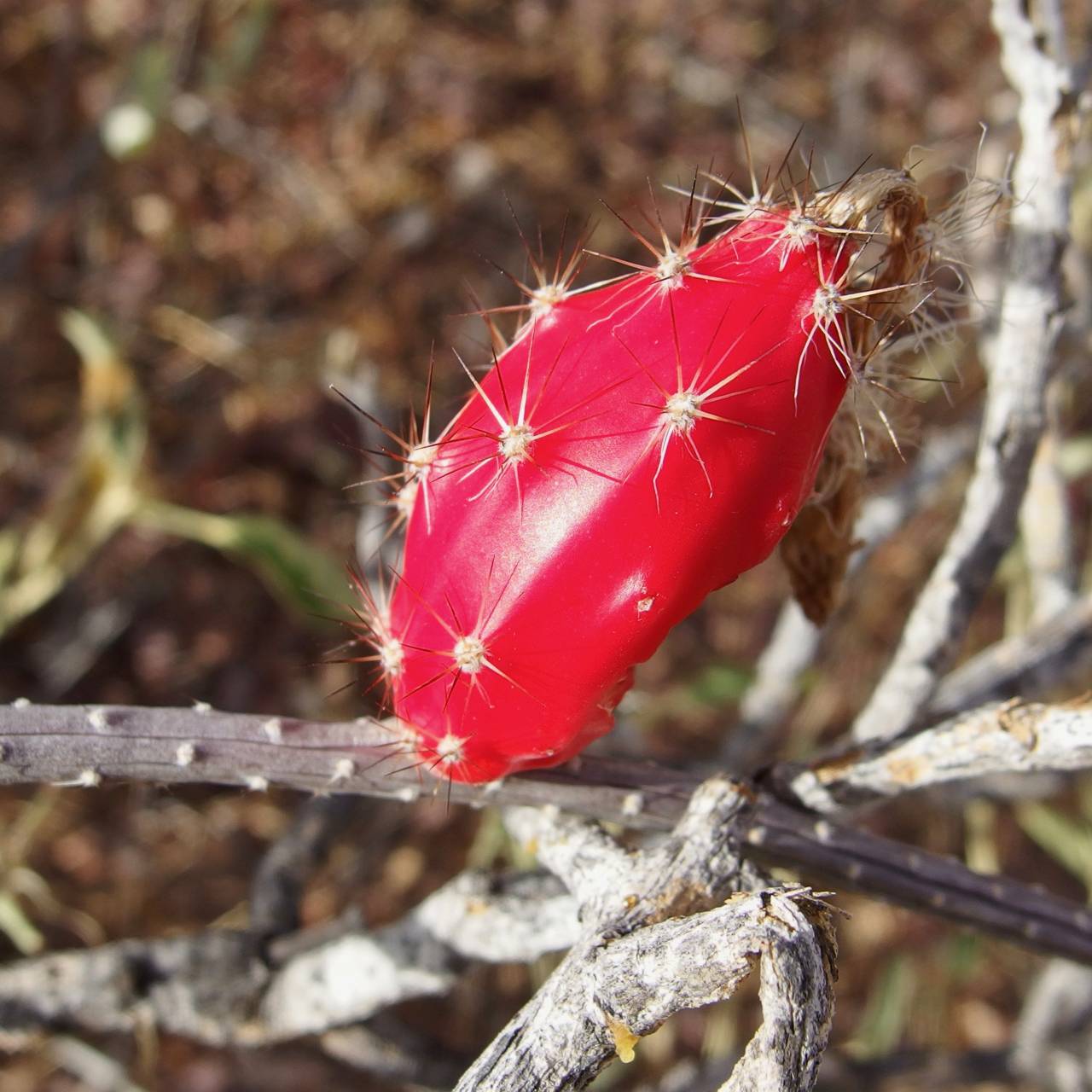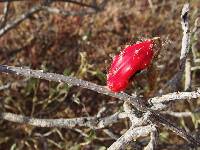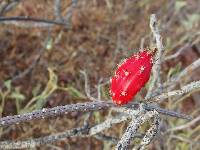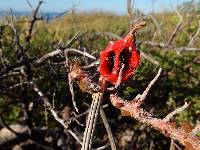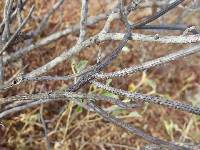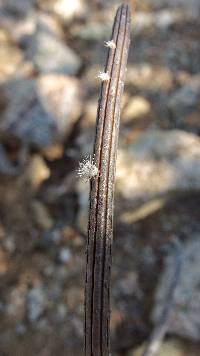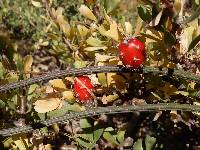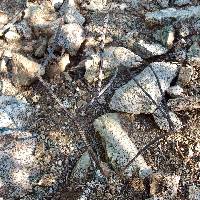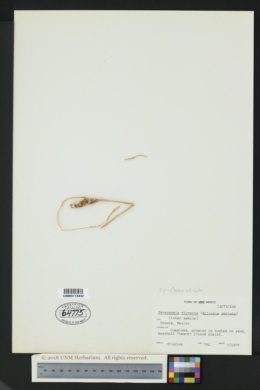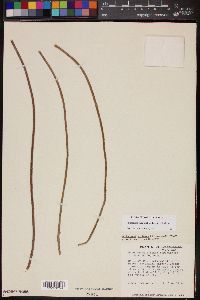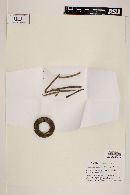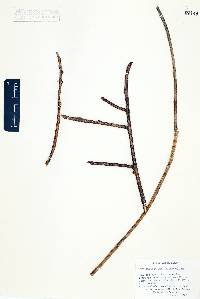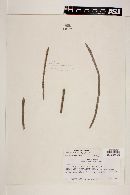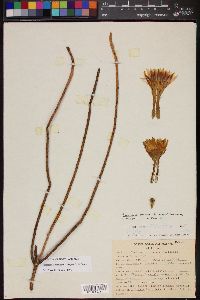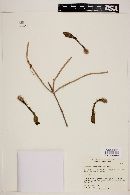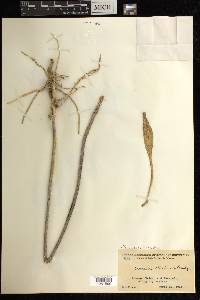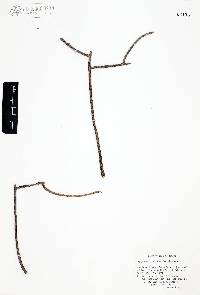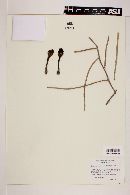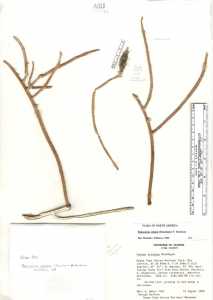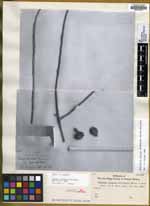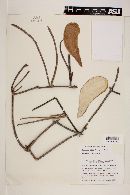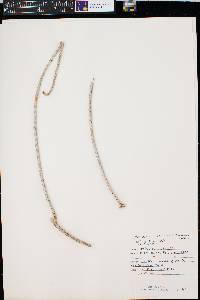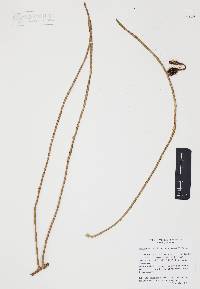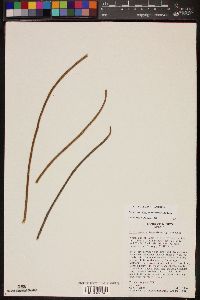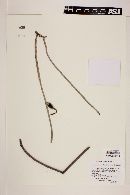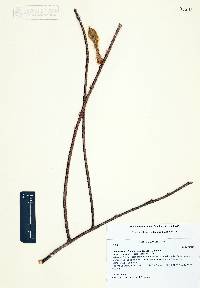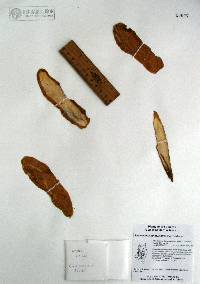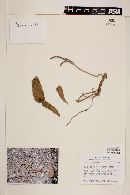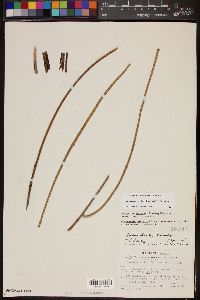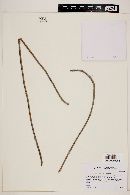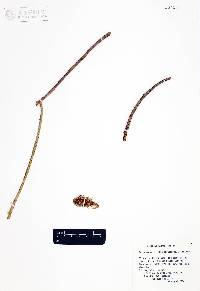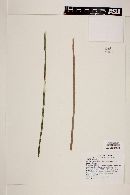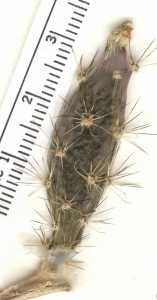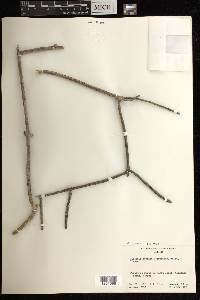Peniocereus striatus
|
|
|
|
Family: Cactaceae
Gear-Stem Cactus, more...gearstem cactus, dahlia-rooted cactus (es: sacamatraca, jacamantraca, pitahayita, jarramatraca, tracamatraca, jaramatraca)
[Cereus diguetii A. Weber, moreCereus striatus Brandeg., Neoevansia striata (Brandeg.) Sánchez-Mejorada, Peniocereus diguetii (F.A.C. Weber) Backeb., Wilcoxia diguetii (A. Weber) Peebles, Wilcoxia striata (Brandeg.) Britt. & Rose] |
Shrubs, suberect to sprawling, very inconspicuous. Roots 12 or more, ending in sweet potato-like swellings, 10-15 × 4-7 cm. Stems greenish brown to brown, branched, 25-75(-100) cm, distally 6 mm diam., at midlength ca. 6 mm diam.; wood hollow, solid-surfaced cylinders, proximally 3-7 mm diam.; ribs 6-9, flat-topped to 2 mm broad, narrowing toward sinus, 0.5 mm deep, separated by narrow grooves; areoles 5-20 mm apart along ribs, circular, 1 mm diam. Spines 5-12 per areole, yellowish white, some with black tips, nearly acicular, weak and easily broken off, 1.5-4 mm; radial spines encircling central spines, abaxial 3 longest, appressed, scurfy when young; central spines 2-3 porrect. Flowers: nocturnal, 7-10 cm; scales of flower tubes green-purple to reddish; outer tepals reddish to green-purple; inner tepals white to lightly tinted rose, lanceolate to oblanceolate, 2 cm, attenuate to apiculate; stamens 1 cm; anthers pale lemon yellow, 1.5-2 mm; style yellow-white, 6 cm; stigma lobes 9, yellowish white. Fruits scarlet, pyriform, 40-50 × 25 mm, with bristlelike spines. Seeds 1 × 0.8 mm; testa pitted near hilum. Flowering summer; fruiting summer-early fall. Sonoran Desert, flats, small hills; 0-500 m; Ariz.; Mexico (Baja California Sur, Sinaloa, Sonora). Plant: Suberect to sprawling shrubs, very inconspicuous, 25-75 cm tall, arising from a cluster of ca. 12 or more light-brown, radiating tuberous roots, these 10-15 cm long, 4-7 cm wide. STEM commonly much branched, green to brown or purple, mostly ca. 6 mm in diameter, papillose-canescent, bearing 6-9 broad, flat-topped ribs, these to 2 mm broad, narrowing beneath, 0.5 mm tall, separated by narrow grooves. AREOLES yellow-tan-woolly, aging white, 5-20 mm apart on the rib Leaves: SPINES yellowish white, some black-tipped to all black, nearly acicular, weak and easily broken off, 5-16 per areole, 1.5-4 mm long, scurfy when young, the radial spines encircling the 2-3 erect central spines, the basal 3-5 spines usually the longest, appressed, scurfy when young Flowers: (5-)7-8 cm long, 5-6 cm wide; floral tube canescent, the scales green-purple to reddish; tepals lanceolate to oblanceolate, attenuate to apiculate, 18-25 mm long, the outer ones reddish to green-purple, the inner ones white or lightly tinted rose; stamens ca. 1 cm long, the filaments white, the anthers pale cream yellow Fruit: FRUITS scarlet, obpyriform to ovoid, bristly spiny, 2.5-5 cm long, 1.5-2.5 cm wide; pulp red, fleshy, bitter. SEEDS 1-2 mm long, 0.8-1.3 mm wide, black, tessellate, wrinkled near hilum region Misc: Sonoran Desert, sandy to rocky flats and small hills; 150-450 m (500-1500 ft); Aug REFERENCES: Pinkava, Donald J. 1995. Cactaceae. J. Ariz. - Nev. Acad. Sci. 29(1): 2, 6. FNA 2004, Pinkava 2004, Benson 1969 Common Name: gearstem cactus Duration: Perennial General: Low, erect to sprawling shrubs that are sparingly branched, the roots thickly tuberous, with unsegmented columnar stems greenish brown to brown, nearly terete below, 25-75 cm tall, 6 mm in diameter below, rigid with 6-9 prominent ribs, flat topped to 2 mm across, narrowing, separated by narrow groves Spines: Areoles 5-20 mm apart along ribs, circular an 1 mm in diameter, with 5-12 spines per areole, yellowish white, occasionally with black tips, conic with swollen bases, appearing bristlelike and weak, 1.5-4 mm long, the radial spines encircling the central spines the lower three are longest, appressed, the 2-3 central spines are porrect. Flowers: Nocturnal, borne laterally along upper part of ribs, along the upper edge of the areoles, fragrant and salverform with long tube flaring abruptly near top, usually 7-10 cm, scales of tube green purple to reddish, outer tepals reddish to green purple, inner white to tinted light rose, lanceolate to oblanceolate, 2 cm, attenuate to apiculate, the stamens 1 mm and the anthers yellow. Fruits: Indehiscent and scarlet, pyriform, 4-5 cm long by 2.5 cm wide, fleshy,with bristle like spines. Ecology: Found on sandy to rocky flats or small hills from 500-1,500 ft ( 152-457 m), flowers July-August. Distribution: Found in the Sonoran Desert in southwestern Arizona, ranging south to Sinaloa, through Sonora, and south onto Baja California. Notes: Distinguished from the similar P. greggii by virtue of the very narrow stems, which appear terete, with the lower rounded ribs crowded together, the flowers are also much smaller. Ethnobotany: The fruits are eaten. Etymology: Peniocereus comes from the Latin penio for tall and the Latin cereus meaning a tapered candle, while striatus means striped. Synonyms: Numerous, see Tropicos Editor: SBuckley, 2011 |
|
|
|

